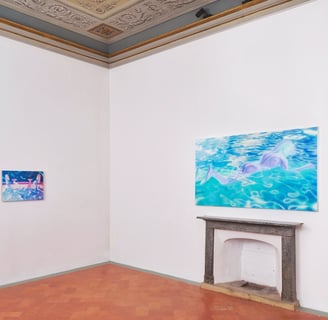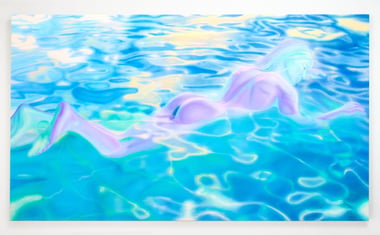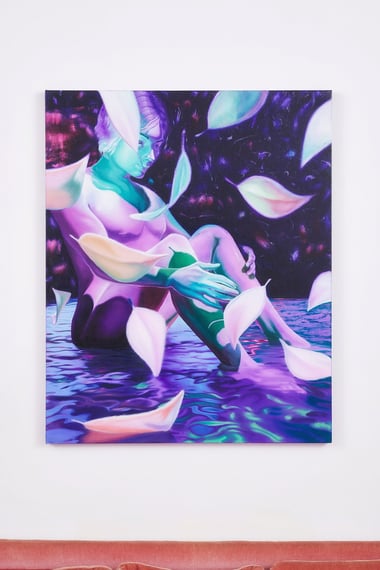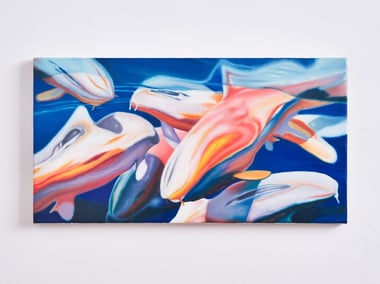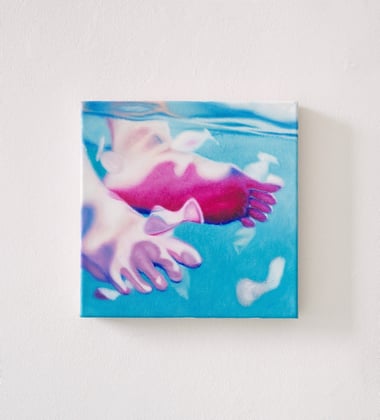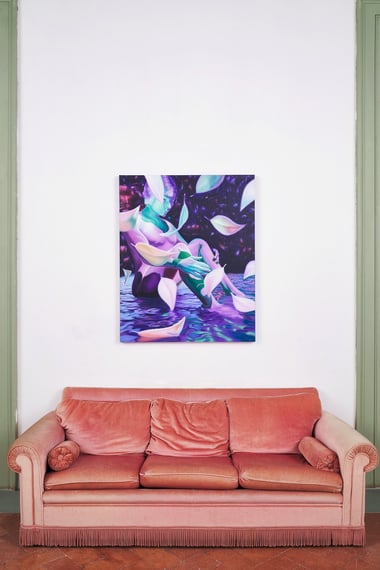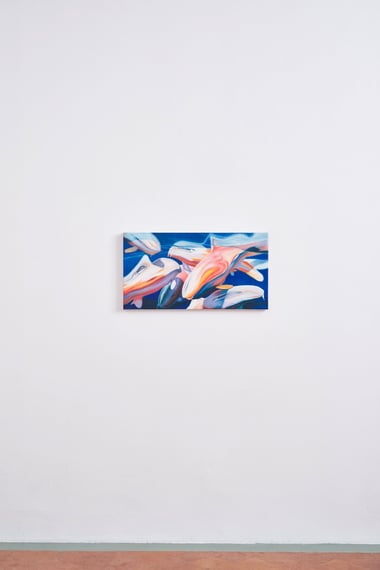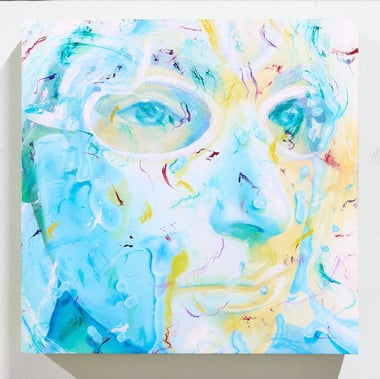Don't Ask A Fish What Water Is
Palazzo Monti
Curated by Edoardo Monti
A couple of years ago, a new creative process began to form in Sam King’s studio, when he suffered from an illness that took most of his energy away. Using Blender, a sophisticated 3D modeling program, he was able to create when he didn’t have the strength to paint. Employing various programs and exploring digital techniques, Sam explored new ideas and began to create worlds within them. Before his illness, he conceived of the body and technology as opposing entities, interacting at times but never in symbiosis.
As a result of his newfound reliance on synthesised medication, he started considering a new theory: perhaps our bodies are not so separated from technology after all. iPhones are an extension of our hands and brains, technology is distilled within pills and drugs, pacemakers and neuralinks are bonded to the flesh. This is transhumanism, or at least Sam’s definition of the philosophical and scientific movement, a recurring topic in many of his paintings.
Sam draws inspiration from a vast array of places, and for this show, water is the main source. Water has always had a strong presence in his life, growing up around it and surfing a lot, but it only now the aqueous subset holds his creative attention.
From summer 2021 through summer 2023, sharp, polished edges dominated Sam’s paintings, a detailed and precise replication of his own digital references. Then, a change. Quick brush marks and strokes, glazing and stumbling, alternating techniques that move beyond the reference. Stippling and pointillism, form fuzzy images of subjects and objects, as if memory has been taking over, enveloping details and blending them within an alternative reality. People, which used to be present in every painting, has given room to objects and creatures. A personal, serendipitous, naive moment - suncream on an iPhone camera, in Liguria, this past summer - Sam discovered foggy images of water reflections that instilled inspiration in the artist. Inspiration comes to us in the most unexpected, simple ways.
Sam contends that our individual and collective experience, through various forms of technological media, is altered in ways that we're not in control of. Can we really understand how AI or ChatGPT or any other algorithm works? The same way that a fish is determined by water - the only environment it knows - we are also in an environment that determines our experience, from which we can’t really exit. To quote again Marshall McLuhan, “One thing about which fish know exactly nothing is water, since they have no anti-environment which would enable them to perceive the element they live in.”. Perhaps we are all fish ourselves swimming in an opaque informatic sea.
Just like water, Sam’s approach to masculinity is also very fluid in his works, a message he explores through a digital-inspired palette and a strong employment of chiaroscuro, further steps towards his analysis and presentation of Transhumanism. He proposes the self and the body as kind of a blank slate, a tabula rasa that can be recreated through technology, through recreation of the self, whether in the physical form or in a kind of mental virtuality. I can immediately think of Netflix’s Black Mirror show, or Andrei Tarkovsky’s Solaris, a movie from 1972 that Sam frequently quotes during our studio visit, which explores the idea of human consciousness becoming lost in something greater, a simultaneously utopian and dystopian premise. Through capitalism and technological advancement we are able to experience these parallel potentialities, two very different sides of the same coin.
We believe to be living in a single present, while often the reality is much more complex. Sam’s scenes draws us in and invite us to identify with the figures, yet we experience a parallel distance, as we accept the fact that we can’t fully understand them. One would believe that art is made to provide answers. Often though, we walk away with challenging, existential questions. - Edoardo Monti

